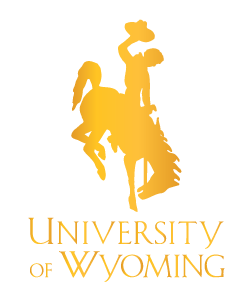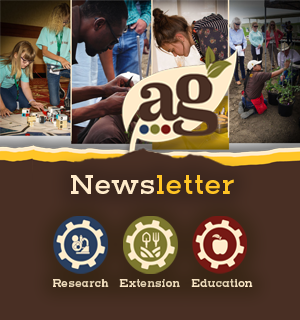The Wyoming State Veterinary Laboratory (WSVL) plays a key role in responding to infectious diseases that affect human and animal health. In February 2025, WSVL staff diagnosed HPAI in chickens that were linked to the state’s first human case of highly pathogenic avian influenza (HPAI).
Below, WSVL Director Alexandra Brower and WSVL Veterinary Virologist Izabela Ragan explain how the vet lab helps local, state, and national stakeholders respond to outbreaks of infectious diseases transmitted by animals, using the recent HPAI diagnosis as a case study.
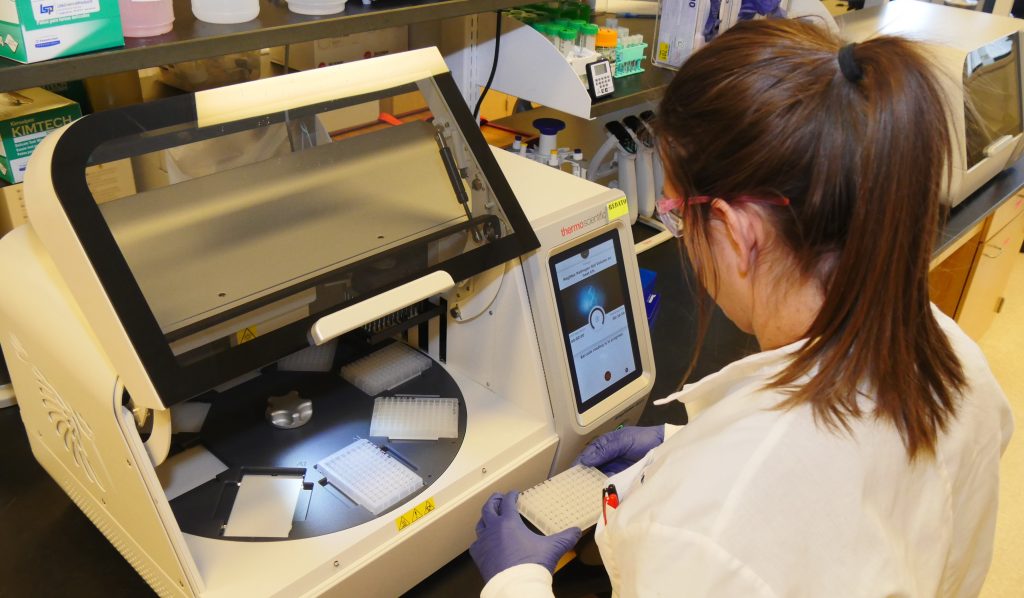
Q: What happens when a person gets sick and a disease like avian influenza is suspected?
In cases of human illness, the first step is patient-doctor communication. In instances where public health or zoonotic pathogens (those that can be transmitted from animals to humans) are a concern, communications expand to involve other agencies based on state and federal regulations. Similarly, the first step in animal illness is animal producer/owner-veterinarian communication.
Reaching a diagnosis is the necessary step that allows practitioners to treat patients, and public health and regulatory entities to take actions that control human and animal disease. WSVL employs the workforce that has the training and expertise necessary to provide that diagnosis.
Q: How does the vet lab work with Wyoming residents and communities to help diagnose disease outbreaks as quickly as possible?
WSVL has been providing animal diagnostics for the state of Wyoming for nearly 80 years. This long history has created deep connections with animal producers and veterinarians across the state. The laboratory has also trained many people throughout the state who are in animal-related industries, including animal production, veterinary medicine, and state and federal animal health regulation. The relationships the laboratory has with the state’s animal health community increase the likelihood that individuals will reach out with questions related to animal disease diagnostics and will submit samples for testing. Identification of animal disease outbreaks in the state of Wyoming, including the current HPAI outbreak, have occurred because of WSVL’s strong community connection.
Q: Once the WSVL receives a sample, what happens next?
Because suspicion is not a diagnosis, sample testing must be conducted before planning and responses to animal illnesses can take place. In Wyoming, animal samples are submitted to the Wyoming State Veterinary Laboratory for this purpose. Results are communicated back to the submitter, who is generally a veterinarian. In some instances, test results have broader animal and/or public health impact, as in the case of HPAI. In these instances, additional steps that include confirmatory testing at the National Veterinary Services Laboratories (NVSL), and reporting to the state animal health officer (SAHO) and other agencies must be taken.
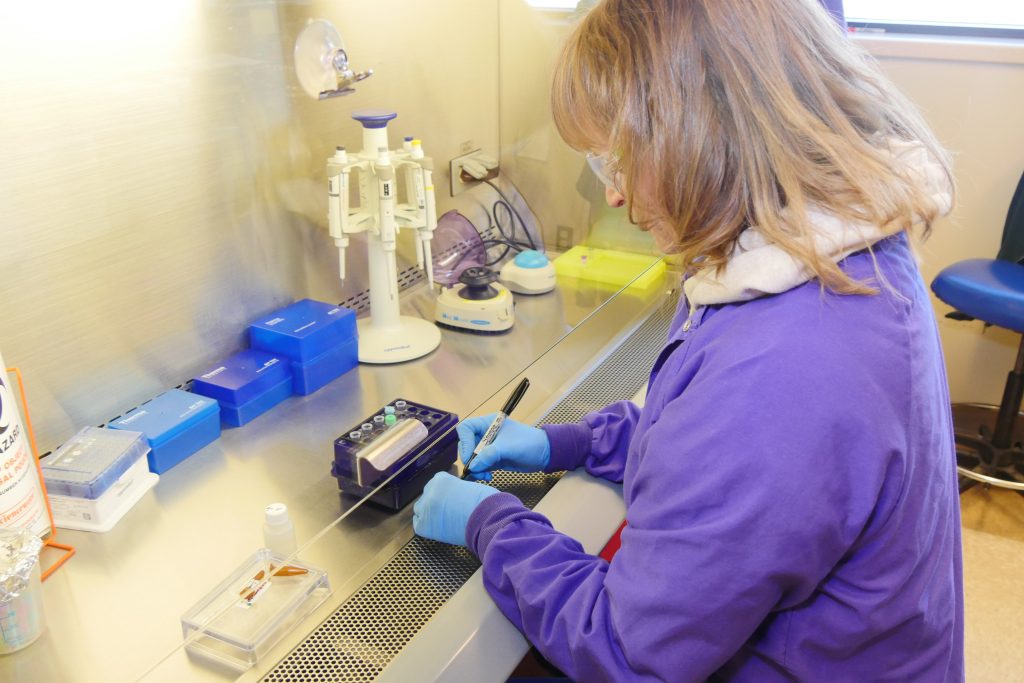
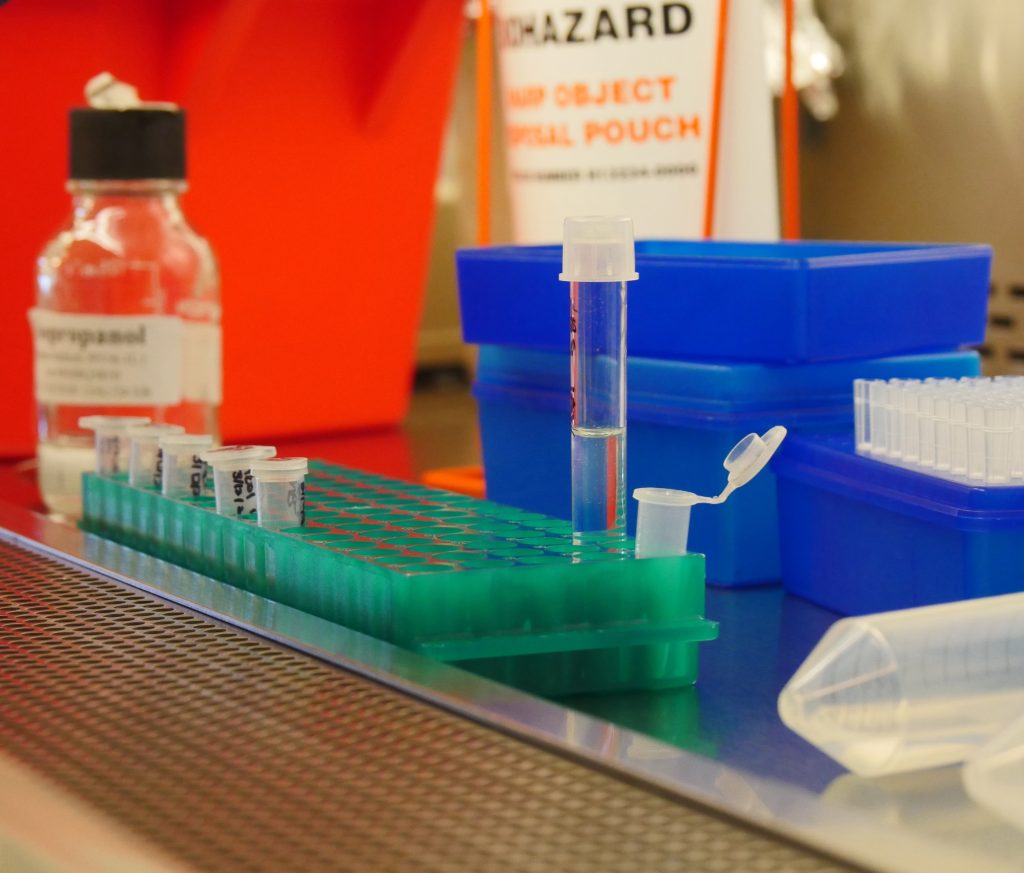
Q: How do WSVL staff members stay safe and avoid spreading disease when working with samples that may contain highly infectious pathogens?
When diagnostic cases are submitted to the WSVL for HPAI testing, strict biosafety protocols are followed to ensure safety at every step. Samples are collected in the appropriate biosafety level (BSL) space, such as biosafety cabinets in the case of birds and small mammals. All personnel handling these samples are equipped with the proper personal protective equipment (PPE) to minimize any risk of exposure. No further examination or testing is conducted until test results are available.
Q: When testing for diseases like HPAI, what kinds of biosafety facilities does WSVL use?
Biosafety levels are established in laboratories to protect employees and the public from potentially hazardous infectious agents or toxins. Routine diagnostics are managed within BSL-2 spaces, which have protective measures for moderate-risk infectious agents. WSVL also has BSL-3 spaces, which allow safe postmortem examinations and testing on larger species for high-risk infectious agents, and biosafety cabinets that allow safe diagnostic sampling on smaller animals, such as birds. Any work conducted in cases of known high-risk infectious agents is conducted following BSL-3 protocols.
Q: In the case of HPAI specifically, what does the diagnostic test entail?
In the case of HPAI testing in birds, swabs are taken from the oral cavity (choana) and vent (cloaca). These samples are tested using a method called polymerase chain reaction (PCR), which looks for the virus’s genetic material. If the animal is negative, additional diagnostic procedures can be performed. If the animal is not negative, laboratory protocols for carcass and waste disposal are followed, and samples are sent for confirmatory testing per regulatory protocols.
Q: How long does the diagnostic process usually take for a disease like HPAI?
HPAI testing turnaround is rapid. WSVL staff are proficiency tested in HPAI testing and results are available within 24–48 hours, depending on the time of day submitted. WSVL non-negative results trigger the next steps in the communication chain and National Veterinary Services Laboratories (NSVL) confirmatory testing.
Q: After a human case of a disease like HPAI is diagnosed, how does WSVL coordinate with local, state, and national stakeholders to ensure public safety?
Continual communication occurs between the agencies shown in Figure 1. If a veterinarian is suspicious of HPAI, that veterinarian will contact the state animal health officer (SAHO). If the SAHO or designee is aware of samples coming to WSVL with suspicion of HPAI, they will notify the laboratory. If a WSVL case coordinator is suspicious of HPAI, that person will contact the submitter. If a diagnostic test at WSVL returns a result as not negative, both NVSL and the SAHO are notified, and the sample is forwarded to the NSVL for confirmatory testing.
Q: How does the WSVL help ensure Wyoming residents are informed when disease is confirmed in a human or animal?
WSVL is always in close communication with NVSL and the Wyoming state veterinarian, who serves as the state’s animal health officer and is based at the Wyoming Livestock Board. WSVL also communicates with Wyoming Public Health in cases involving zoonotic pathogens. Additionally, WSVL directly communicates with veterinary clients and stakeholders across the state through social media, website and email updates, a newsletter, and an annual report.
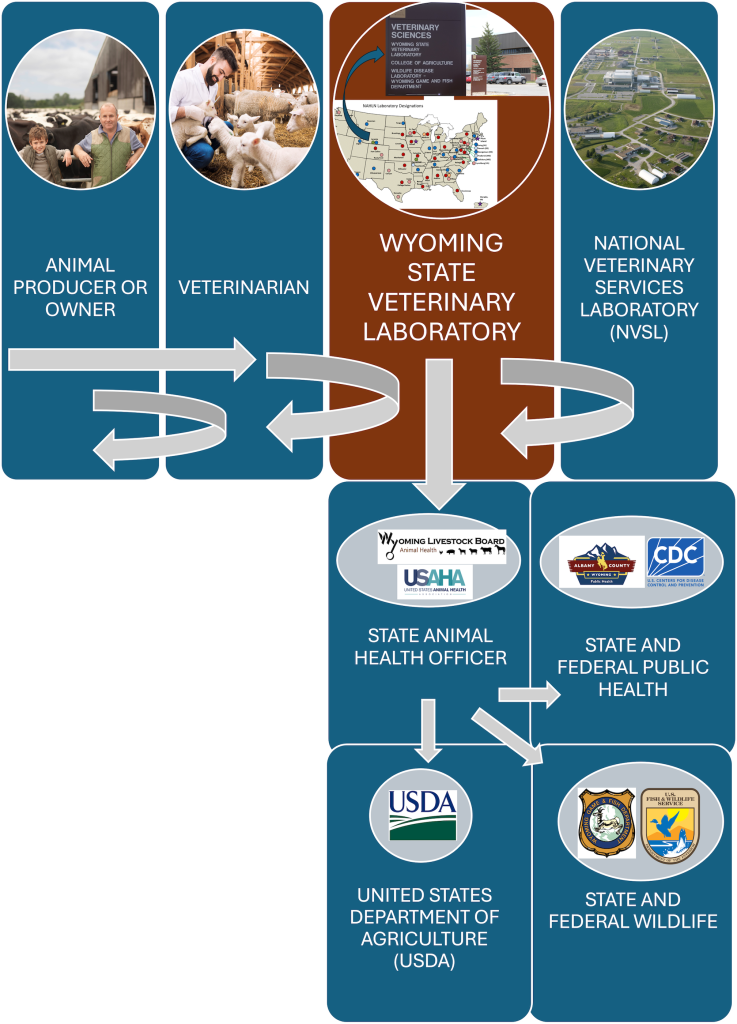
Q: Is the confirmation of a human case of HPAI in Wyoming a cause for widespread concern?
The wider implications of the recently reported human case in Wyoming are being addressed by the Wyoming Department of Health, and they have posted recommendations to mitigate risk of human infection on their website. There is a small number of known human infections in the U.S. related to the current outbreak, and there is no evidence of human-to-human transmission at this time.
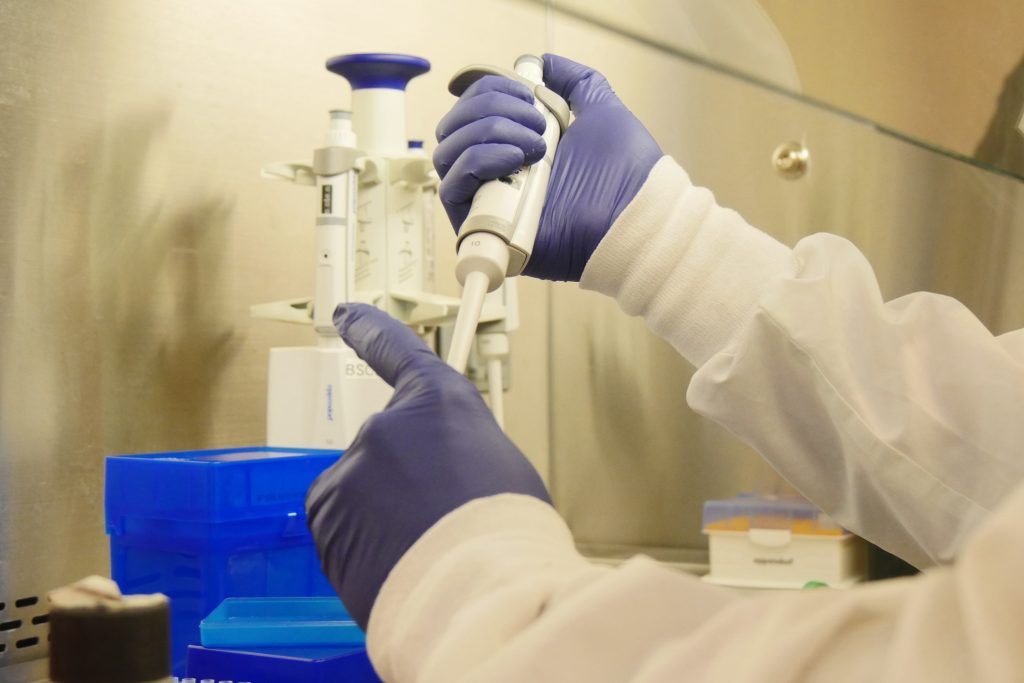
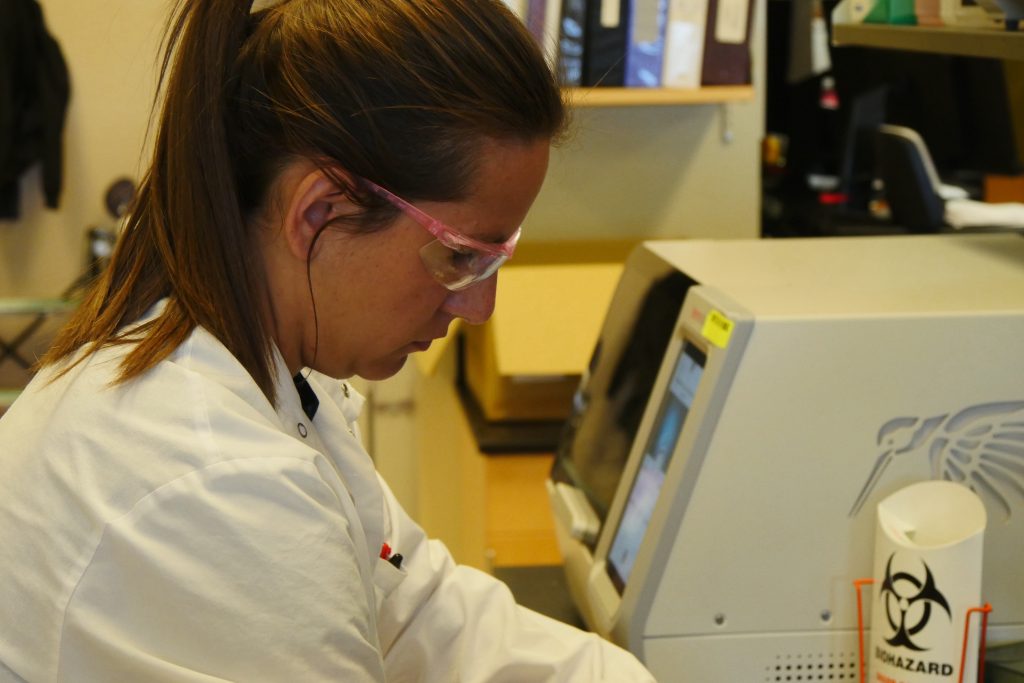
Q: What should people do if they suspect a bird or human has contracted HPAI?
For concerns related to human illness, contact a physician and/or the Wyoming Department of Public Health. For concerns related to animal health, contact a veterinarian and/or the Wyoming State Veterinarian. Suspected cases of HPAI in wild birds should be reported to the Wyoming Game and Fish Department and suspected cases in domestic birds should be reported to the Wyoming Livestock Board.
Q: What should Wyoming residents, especially those who raise poultry, know about prevention and detection of HPAI?
There are different routes depending on circumstances, but developing an excellent relationship with your local veterinarian is critical. This should be the first interaction and it will lead to the best results in terms of diagnosis, treatment, and prevention.
Q: How might the WSVL play a role in further research in the transmission and control of HPAI and other infectious diseases?
WSVL is a unique laboratory because it has both a natural infection diagnostic caseload, and BSL-3 diagnostic and research space, creating opportunities to advance our understanding of the diseases naturally occurring in animals in Wyoming.
The virology section of WSVL has a new head virologist with strong interest in influenza research. There are still many unanswered questions about the current HPAI outbreak, particularly concerning which species are most susceptible to the virus and how it is transmitted among mammals. The BSL-3 labs at WSVL provide the ideal environment to explore these questions following high biosafety and biosecurity standards. Our lab’s ability to study these infectious agents in such a setting is not only critical for understanding how the virus behaves but also for developing more effective prevention and control strategies to protect both animal and human health.
To learn more about the Wyoming State Veterinary Laboratory, visit www.uwyo.edu/wyovet or call (307) 766-9925.


